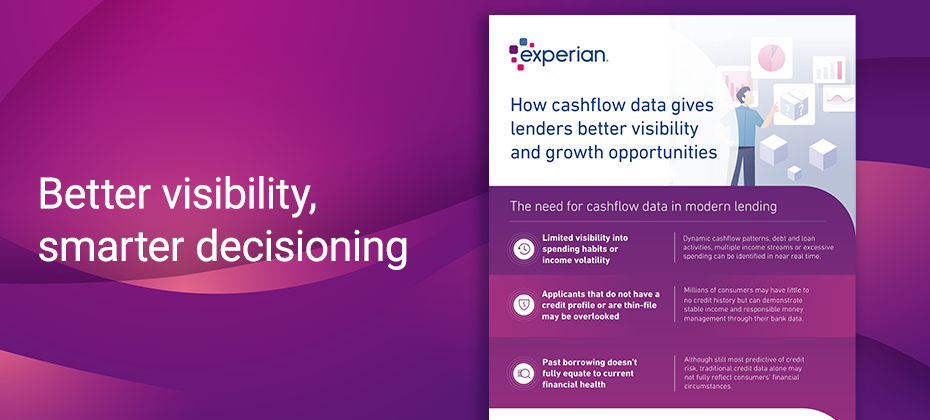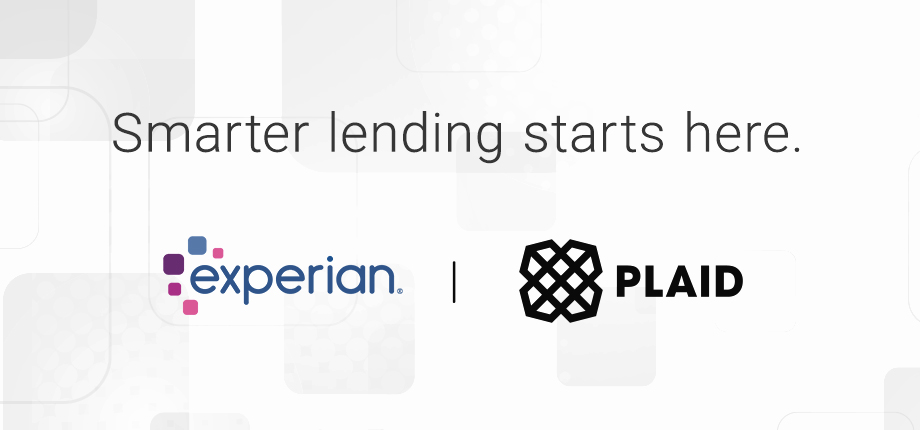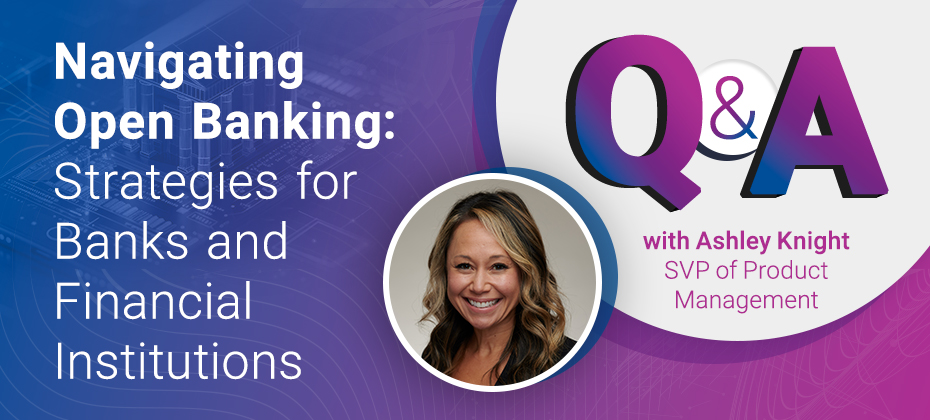Tag: open banking

In today’s evolving economic climate, lenders face a growing challenge: how to accurately assess creditworthiness — especially for consumers with limited credit histories. That’s where cash flow insights come into play. Our latest infographic illustrates how cashflow data helps lenders achieve a more comprehensive understanding of borrowers' financial health. What you'll learn: Why cashflow data is essential for modern, inclusive lending The key financial behaviors that cash flow insights can uncover How these insights help lenders expand market reach and make more precise decisions Read the infographic to learn more. View infographic

Experian and Plaid are teaming up to power smarter, faster, and more inclusive lending — fueled by real-time cash flow insights. The financial landscape is becoming more dynamic and digitally connected. Consumers are increasingly turning to digital platforms not only to pay bills and track spending, but to better understand their financial health, monitor their credit standing, and plan confidently for the future. This evolution presents a timely opportunity for innovation in underwriting — one that empowers consumers to take control of their financial futures and enables lenders to make faster, smarter, and more inclusive decisions. What happens when the leading global data and technology company joins forces with the largest open banking network in the world? Experian and Plaid are coming together to solve some of the most pressing challenges lenders face, bringing cash flow insights into credit decisions, seamlessly. Smarter lending: Elevating the credit decision process For lenders seeking a holistic view of borrowers to make faster, more informed decisions, this new collaboration is a game-changer. Experian and Plaid are combining real-time, unmatched cash flow data and analytics to help lenders improve decisioning, pinpoint risk precisely, and drive financial inclusion. This marks a pivotal shift in how credit is assessed, moving us toward faster, and fundamentally smarter lending decisions. This strategic collaboration delivers real-time cash flow insights in a comprehensive solution, built on core principles designed to directly enhance your lending capabilities: Speed and simplicity: Driving efficiency with seamless integration In today’s fast-paced financial landscape, efficiency in underwriting isn’t just an advantage; it’s a necessity. Our combined solution prioritizes speed and simplicity by offering easy integration through APIs. This ensures fast access to meaningful risk insights, streamlining your workflows. Imagine easily leveraging real-time cashflow risk insights directly into your existing processes for faster and smarter lending decisions. This is about delivering modern infrastructure that allows you to move at the speed of today's market, empowering your business to expand with confidence. Broader visibility: Unveiling a holistic consumer view Traditional credit scores are a reliable, crucial tool for measuring a borrower’s creditworthiness. When coupled with real-time cashflow data and risk insights, lenders are empowered with broader visibility, bringing to light a more holistic view of a borrower’s current financial reality and opportunities that may have been missed. You gain a comprehensive consumer financial picture, allowing for more precise identification of both strong financial capacity and potential risks, ultimately helping you target and acquire customers who align with your growth objectives. Smarter decisions: Enhancing models with combined intelligence The power to make truly informed decisions hinges on the quality and depth of your data. Without robust insights, risk models can be limited, impacting precision and speed. With Experian's advanced cash flow analytic capabilities and Plaid's streamlined access to real-time cash flow data via Consumer Report, you can enhance your risk assessment for smarter decisions. This synergy empowers financial institutions to expand credit access and uncover hidden risks, leading to more precise underwriting. It’s about leveraging advanced analytics in real-time to drive improved decision-making and build stronger portfolios. More inclusive lending: Expanding access, responsibly A significant challenge in lending is ensuring access for all creditworthy individuals, including those with limited traditional credit histories who may be overlooked. This represents an untapped market and a vital opportunity for responsible growth. Our solution champions more inclusive lending, enabling you to reach underserved communities and empower consumers who demonstrate strong financial capacity. This not only fosters stronger portfolios but critically helps your business grow by efficiently acquiring customers across a broader spectrum. Proven trust: Lending with confidence In the financial industry, the bedrock of any solution is trust – in the data, security, and partners. Lenders require unwavering confidence in the tools they adopt. This collaboration is built on proven trust, leveraging the reach, reliability, and security of two of the most trusted names in financial services. Experian’s expertise in credit data and consumer protection, combined with Plaid’s modern infrastructure and trusted open banking network, offers unparalleled assurance. You can securely integrate these powerful insights, knowing you are backed by industry leaders committed to best-in-class security and compliance, enabling your business to grow with confidence without compromise. Smarter lending starts now The evolution of underwriting demands a more dynamic, inclusive, and precise approach. With Experian and Plaid, you're not just adapting to change; you're leading it. Empower your organization to approve more borrowers, reduce risk more effectively, and make smarter, faster decisions for sustainable success. Ready to transform your lending strategy? Learn more about how to bring cash flow insights into your credit decisions seamlessly. Learn more

The open banking revolution is transforming the financial services landscape, offering banks and financial institutions unprecedented access to consumer-permissioned data. However, during our recent webinar, “Navigating Open Banking: Strategies for Banks and Financial Institutions,” over 78% of attendees stated that they do not currently have an open banking strategy in place. This highlights a significant gap in the industry. By tapping into consumer-permissioned data, you can develop more personalized products, streamline credit decisioning, and improve overall customer engagement. With the right strategies, open banking offers a pathway to growth, innovation, and enhanced customer experiences. Here’s a snippet from the webinar’s Q&A session with Ashley Knight, Senior Vice President of Product Management, who shared her perspective on open banking trends and opportunities. Q: What specific analytic skill is the most important when working on open banking data?A: The ability to parse and transform raw data, a deep understanding of data mining, experience in credit risk, and general modeling skills to improve underwriting. Q: What lessons did the U.S. learn from the experience of other countries that implemented open banking? A: The use cases are common globally; typical uses of open banking data include second-chance underwriting to help score more consumers and customer management, which involves assessing cashflow data to leverage on an existing portfolio (first-party data). This can be used in various ways, such as cross-sell, up-sell, credit line increase, and growing/retaining deposits. Q: Does Experian have access to all a consumer’s bank accounts in cases where the consumer has multiple accounts?A: Data access is always driven by consumer permission unless the organization owns this data (i.e., first-party data). Where first-party data is unavailable, we collect it through clients or lenders who send it to us directly, having gained the proper consent. Yes, we can intake data from multiple accounts and provide a categorization and attribute calculation. Q: Where does the cashflow data come from? Is it only credit card spending?A: It includes all spending data from bank accounts, checking accounts, credit cards, savings, debit cards, etc. All of this can be categorized, and we can calculate attributes and/or scores based on that data. Q: What is the coverage of Experian’s cashflow data, and how is it distributed across risk bands?A: Cashflow data moves through Experian directly from consumer permissioning for B2B use cases or from institutions with first-party data. We perform analytics and calculate attributes on that portfolio. Don’t miss the chance to learn from our industry leaders on how to navigate the complexities of open banking. Whether you are a seasoned professional or just starting to explore its potential, this webinar will equip you with the knowledge you need to stay ahead. Watch on-demand recording Learn more Meet our expert Ashley Knight, Senior VP of Product Management, Experian Ashley leads our product management team focusing on alternative data, scores, and open banking. She fosters innovation and drives financial inclusion by using new data, such as cash flow, analytics, and Experian’s deep expertise in credit.

Alternative lending is continuing to revolutionize the financial services landscape. From full-file public records to cash flow transactions, alternative credit data empowers financial institutions to make more informed lending decisions. This article focuses on cash flow insights and how they help financial institutions drive profitable and inclusive growth. Challenges with traditional credit underwriting Traditional underwriting often limits access to credit for marginalized communities, including young adults, immigrants, and those from low-income backgrounds. Because the process relies heavily on credit history and credit scores to determine an applicant’s ability to pay, those with less-than-ideal credit profiles could be overlooked. This then creates a cycle — those who are already disadvantaged face further barriers to accessing credit, limiting their abilities to invest in opportunities that can improve their financial situations, such as education or homeownership. Additionally, traditional underwriting models can be rigid. Consumers with stable incomes or significant assets may be denied credit if their financial profiles don’t fit the narrow criteria established by traditional models. As the financial landscape evolves, it’s important for lenders to adopt more inclusive and adaptive approaches to credit underwriting. What is cash flow underwriting? Cash flow underwriting is a modern approach to evaluating a borrower’s creditworthiness. It uses fresh, consumer-permissioned bank account transaction (balance, income and expense) data, giving lenders greater visibility into loan applicants’ financial situation. This process is made possible through open banking, an established, secure framework that enables consumers to quickly and easily share their bank account information with third-party financial service providers. READ: Learn more about the open banking landscape. Let’s look at a few quick examples: A prospective tenant is filling out a rental application. Instead of manually submitting paystubs to verify their income, open banking facilitates the digital sharing of full cashflow data in seconds, enabling property managers to quickly access the applicant’s full cash flow information. A consumer was previously denied credit due to insufficient credit history. With cash flow underwriting, the consumer is offered a second chance to qualify for the loan by including cash flow data in the lender’s decisioning model. The additional information gathered on the consumer’s ability to pay can transform the initial decline decision into an approval. Cashflow underwriting can also be used for credit line management. By assessing a borrower’s income and expense transactions, lenders can recommend optimal credit limits that cater to their spending potential while minimizing risk. Benefits of cash flow underwriting There are many benefits to integrating cash flow data into the credit underwriting process, including: Enhanced risk assessment. Going off credit scores and repayment behaviors alone won’t provide lenders with a complete or current picture of applicants. Through open banking, lenders can gain access to cashflow data in real-time, allowing them to more accurately assess consumers, increase approvals, and reduce credit risk. Inclusive lending. Over 100 million adult Americans are considered unscoreable, invisible, or subprime.1 However, 71% of consumers are willing to share their banking information if it could improve their chances of getting approved for credit.2 With deeper insights into consumers’ income and expenses, lenders can increase credit access in underserved communities. Improved customer experiences. Gaining a more comprehensive view of a consumer’s financial situation enables lenders to determine what loan products they’re eligible for and craft personalized options. READ: Learn more about the benefits of leveraging alternative data for credit underwriting. Get started Cash flow underwriting represents a significant step forward in the world of lending. It offers a more comprehensive approach to assessing creditworthiness, helping financial institutions drive growth and profitability. Experian’s Cashflow Attributes are an open banking enabled solution that provides lenders with consumer-permissioned insights into borrowers’ financial behaviors. With 940+ attributes derived from transaction data across 133 categories, financial institutions can make smarter, more inclusive lending decisions. Learn more about Cashflow Attributes Learn more about open banking 1 2023 State of Alternative Credit Data Report, Experian, 2023. 2 Atomik Research survey of 2,005 U.S. adults online, matching national demographics, 2024. This article includes content created by an AI language model and is intended to provide general information.

Open banking has been leveraged for years in the U.S. The anticipated U.S. regulation under section 1033 of the Dodd-Frank Act, combined with the desire to expand lending universes, has increased interest and urgency among financial institutions to incorporate open banking flows into their workstreams. With technological improvements, increased data availability, and increasing consumer awareness around the benefits of data value exchange, financial service providers can use consumer-permissioned data to gain new insights. For example, access to bank account transactional data, permissioned appropriately, provides important attributes into risk, spend and income behaviors, and financial health, while equipping institutions with intelligence they can harness to help meet various business objectives. Current state of open banking Open Banking use cases are extensive and will continue to expand as access to permissioned data becomes more common. Second chance underwriting, where a lender retrieves additional insights to potentially reverse the primary declination, is the most prevalent use case in the market today. Where a consumer may have limited or no credit history, this application of cashflow attributes and scores in a decisioning flow can help many consumers access financial services where they cannot be fully underwritten on credit data alone. And it is not just consumer behavior and willingness to permission their data that will accelerate open banking in financial services. The technology enabling access, security, standardization, and categorization is equally critical. New and existing players across the ecosystem are rolling out new solutions to drive results for financial institutions. The benefits of open banking are vast as highlighted recently by Craig Focardi, Principal Analyst at Celent: “The final adoption of the CFPB’s proposed rule under Section 1033 will accelerate open banking in the US,” said Focardi. “Although open banking is operating effectively under existing consumer protection/privacy and related laws and regulations, this modern opening banking rule will enhance consumer control over their data for privacy and security, help consumers better manage their finances, and help them find the best products and banking relationships. For financial institutions, it will level the competitive playing field for smaller financial institutions, increase competition for customer relationships, and incentivize all financial institutions to invest in technology, data, and analytics to adopt open banking more quickly.” Despite the wealth of information that open banking can offer, institutions are at varying stages of maturity when it comes to using this data in production, with fintechs and challenger banks leading the way. However, most banks are researching and planning to take advantage of the insights unlocked through open banking – particularly cashflow data. But why is there not wider adoption when this ‘new’ data can offer such rich and actionable insights? The answer varies, but it is top of mind for risk officers, analysts and marketers. Some financial institutions are worried about application drop-off as consumers move through a data consent journey. Others are taking a wait-and-see approach as they are concerned about incorporating open banking flows only to see regulation upend the application of permissioned data. Regardless of readiness, most organizations are in various stages of testing new permissioned data sources to understand the implications. Experian has helped many financial institutions understand the power of consumer-permissioned data through analytics and specific tests leveraging client transactional data and our cash flow models. On aggregate, we see cashflow data perform well on its own in determining a consumer’s likelihood of going 60 days past due over 12 months; however, it is best used in combination with traditional and alternative credit data to achieve optimal performance of underwriting models. But what about consent? Will consumers be open to permissioning their data? From our research, we see that consumers are willing to give permission if the benefits are explained and they understand how their data will be used. In fact, 70% of consumers report they are likely to share banking data for better loan rates, financial tools, or personalized spending insights.1 Experian reveals new solutions for open banking We at Experian are excited about the benefits open banking can provide, including: Giving more control to consumers: Consumers are hungry for more control over their data. We have seen this ourselves with Experian Boost®. When the benefits of data sharing are properly explained, and consumers can control when and how that data is used, it is empowering and allows consumers the potential to unlock new financial opportunities. Improving risk assessment: As mentioned above, analysis shows that cash flow data (transactional open banking data) is very predictive on its own. Adding our credit data delivers even greater predictability, enabling lenders to score more consumers and offer the right products, services, and pricing. Augmenting existing strategies: Open banking is not a new strategy; it augments and improves many existing processes. Institutions do not need to start something from scratch; they can layer incremental data into existing processes for an improved risk assessment, deeper insights, and a better customer experience. Open banking is not a new strategy; it augments and improves many existing processes. Institutions do not need to start something from scratch; rather, they can layer incremental data into existing processes for an improved risk assessment, deeper insights, and a better customer experience. We’re helping institutions unlock the power of open banking data by transforming transaction data into precise categories, a foundational component of cashflow analytics that feeds into the calculation of attributes and scores. These new Cashflow Attributes can be easily plugged into existing underwriting, analytic, and account management use cases. Early indicators show that Cashflow Attributes can boost predictive accuracy by up to 20%, allowing lenders to drive revenue growth while mitigating risk.2 Open banking is emerging in the industry across various use cases. Many are only just realizing the potential insights and benefits this can have to consumers and their organizations. How will you leverage open banking? Learn more about how we're helping address open banking 1Atomik Research survey of 2,005 U.S. adults online, matching national demographics. Fieldwork: March 17-21, 2024. 2Experian analysis based on GINI predictability. GINI coefficient measures income or wealth inequality within a population, with 0 indicating perfect equality and 1 indicating perfect inequality, reflecting predictive capability.

Open banking is revolutionizing the financial services industry by encouraging a shift from a closed model to one with greater transparency, competition, and innovation. But what does this mean for financial institutions, and how can you adapt to this new landscape, balancing opportunity against risk? In this article, we will define open banking, illustrate how it operates, and weigh the challenges and benefits for financial institutions. What is open banking? Open banking stands at the forefront of financial innovation, embodying a shift toward a more inclusive, transparent, and consumer-empowered system. At its core, open banking relies on a simple yet powerful premise: it uses consumer-permissioned data to create a networked banking ecosystem that benefits both financial institutions and consumers alike. By having secure, standardized access to consumer financial data — granted willingly by the customers themselves — lenders can gain incredibly accurate insights into consumer behavior, enabling them to personalize services and offers like never before. How does open banking work? Open banking is driven by Application Programming Interfaces (APIs), which are sets of protocols that allow different software components to communicate with each other and share data seamlessly and securely. In the context of open banking, these APIs enable: Account Information Services (AIS): These services allow third-party providers (TPPs) to access account information from financial institutions (with customer consent) to provide budgeting and financial planning services. Payment Initiation Services (PIS): These services permit TPPs to initiate payments on behalf of customers, often offering alternative, faster, or cheaper payment solutions compared to traditional banking methods. Financial institutions must develop and maintain robust and secure APIs that TPPs can integrate with. This requires significant investment in technology and cybersecurity to protect customer data and financial assets. There must also be clear customer consent procedures and data-sharing agreements between financial institutions and TPPs. Benefits of open banking Open banking is poised to create a wave of innovation in the financial sector. One of the most significant benefits is the ability to gain a more comprehensive view of a consumer’s financial situation. With a deeper view of consumer cashflow data and access to actionable insights, you can improve your underwriting strategy, optimize account management and make smarter decisions to safely grow your portfolio. Additionally, open banking promotes financial inclusion by enabling financial institutions to offer more tailored products that suit the needs of previously underserved or unbanked populations. This inclusivity can help bridge the gap in financial services, making them accessible to a broader segment of the population. Furthermore, open banking fosters competition among financial institutions and fintech companies, leading to the development of better products, services, and competitive pricing. This competitive environment not only benefits consumers but also challenges banks to innovate, improve their services, and operate more efficiently. The collaborative nature of open banking encourages an ecosystem where traditional banks and fintech startups co-create innovative open banking solutions. This synergy can accelerate the pace of digital transformation within the banking sector, leading to the development of cutting-edge technologies and platforms that address specific market gaps or consumer demands. Challenges of open banking While open banking presents a plethora of opportunities, its adoption is not without challenges. Financial institutions must grapple with several hurdles to fully leverage the benefits open banking offers. One of the most significant challenges is fraud detection in banking and ensuring data security and privacy. The sharing of financial data through APIs necessitates robust cybersecurity measures to protect sensitive information from breaches and fraud. Banks and TPPs alike must invest in advanced security technologies and protocols to safeguard customer data. Additionally, regulatory compliance poses a considerable challenge. Open banking regulations vary widely across different jurisdictions, requiring banks to adapt their operations to comply with diverse legal frameworks. Staying abreast of evolving regulations and ensuring compliance can be resource-intensive and complex. Furthermore, customer trust and awareness are crucial to the success of open banking. Many consumers are hesitant to share their financial data due to privacy concerns. Educating customers on the benefits of open banking and the measures taken to ensure their data’s security is essential to overcoming this obstacle. Despite these challenges, the strategic implementation of open banking can unlock remarkable opportunities for innovation, efficiency, and service enhancement in the financial sector. Banks that can successfully navigate these hurdles and capitalize on the advantages of open banking are likely to emerge as leaders in the new era of financial services. Our open banking strategy Our newly introduced open banking solution, Cashflow Attributes, powered by Experian’s proprietary data from millions of U.S. consumers, offers unrivaled categorization and valuable consumer insights. The combination of credit and cashflow data empowers lenders with a deeper understanding of consumers. Furthermore, it harnesses our advanced capabilities to categorize 99% of transaction Demand Deposit Account (DDA) and credit card data, guaranteeing dependable inputs for robust risk assessment, targeted marketing and proactive fraud detection. Watch open banking webinar Learn more about Cashflow Attributes